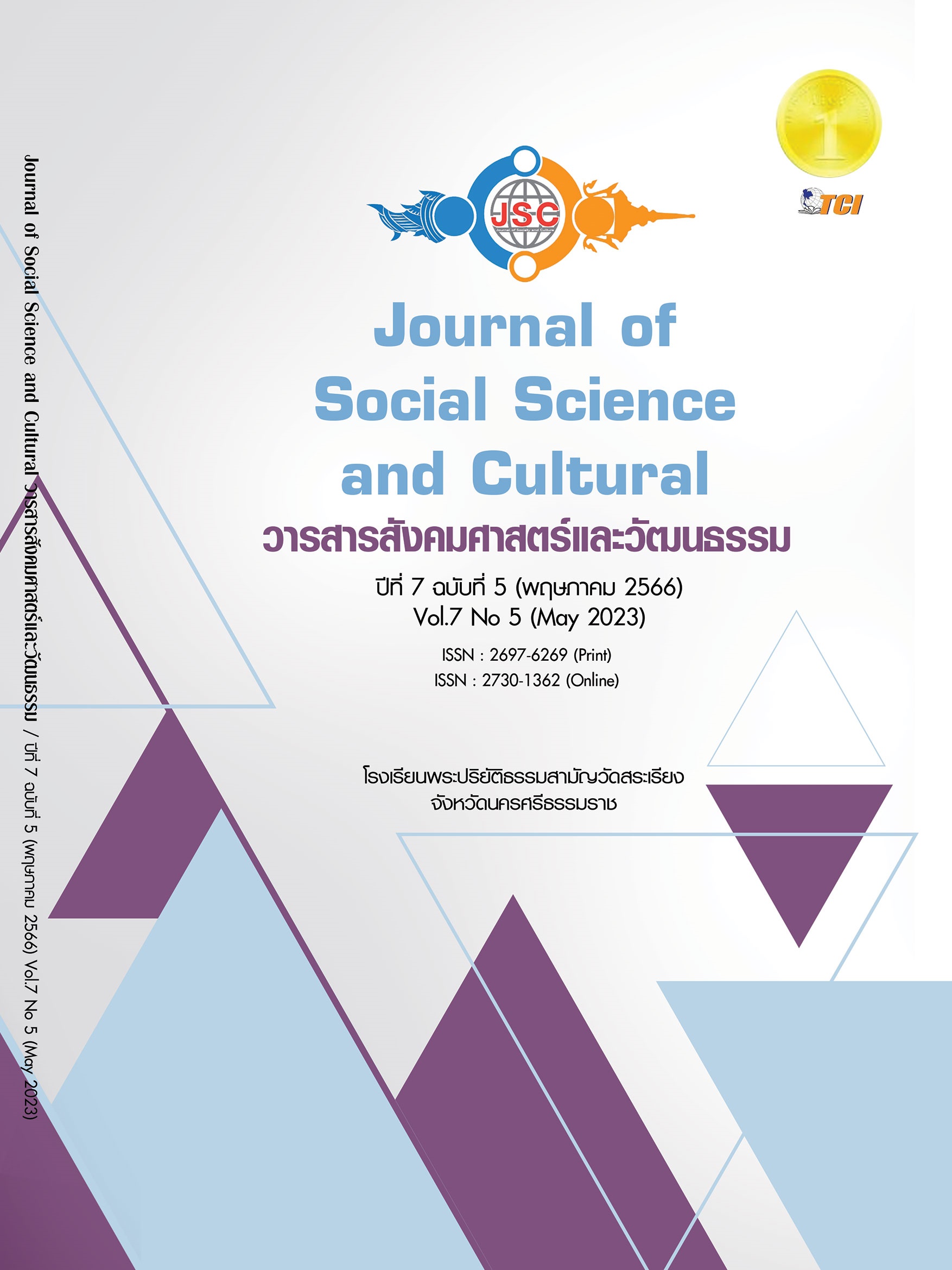MARKETING COMMUNICATION OF NONGNUER MASCOT TO PROMOTE SUPHANBURI BRAND
Main Article Content
Abstract
The objectives of this research were to: 1) to study the problems and the obstacles of marketing communication of Nongnuer Mascot and its support to Suphanburi Province brand; 2) to provide suggestions on how to improve marketing communication of Nongnuer in order to support Suphanburi Province brand. This research is implemented by using the qualitative research methodology, selecting a very specific sample space, together with various depth interviews in the related field from 5 government officers and 3 persons from private sector. The committee Driving brand Nong Nuer, which set the marketing communication policy of its mascot, analyzes the collective data by using content analysis technique. It examines the consistency with the research objectives by arranging and classifying the data systematically for analyzing the theoretical associations and relationships in order to obtain answers according to the research objectives. The result shows that using limited marketing online platforms and lack of managing skills are the problems and the threat to Nongnuer marketing communication because using the online platform of the Provincial Public Relations Office Therefore, it lacks the prominence of Nong Nuer mascot in communicating news and information. In addition to the lack of interest from a good storytelling, there is no proactive ways of communication both offline and online. The difference in personality of mascot Nongnuer and its mannequin is so vague. To improve the marketing communication of Nongnuer, this research comes up with solutions and suggestions: making a related website of Nongnuer (showing the story of Nongnuer), creating various marketing communication online platforms, supporting offline communication media, creating proactive plan, analyzing specific target groups, and manufacturing Nongnuer mannequin to look exactly like the mascot.
Article Details
References
กะรัตเพชร บุญชูวิทย์ และวรัชญ์ ครุจิต. (2561). การศึกษาการสื่อสารแบรนด์ของคุมะมงผ่านสื่อออนไลน์. วารสารการสื่อสารและการจัดการนิด้า, 4(1), 43-61.
พจน์ ใจชาญสุขกิจ. (2558). กลยุทธ์การสื่อสารเพื่อบริหารแบรนด์และสื่อสารการตลาดในยุคดิจิทัล.กรุงเทพฯ: สมาคมประชาสัมพันธ์ไทย.
สุชาดา วัฒนารักษ์. (2563). การสื่อสารอัตลักษณ์จังหวัดด้วยมาสคอตเพื่อส่งเสริมการ ท่องเที่ยวไทย. ใน นิเทศศาสตรดุษฎีบัณฑิต สาขานิเทศศาสตร์การตลาด.
มหาวิทยาลัยหอการค้าไทย.
เสริมยศ ธรรมรักษ์. (2557). การสื่อสารแบรนด์. กรุงเทพฯ: สำนักพิมพ์มหาวิทยาลัยกรุงเทพ.
Callcott, M. F., & Phillips, B. J. (1996). Observations: Elves Makes Good Cookies: Creating Likable Spokes-Character Advertising. Journal of
Advertising Research, 36(5), 73-79.
Greyser, S. A., & Urde, M. (2019). What does your corporate brand stand for. Harvard Business Review, 1(2), 82-89.
Inoue, H., & Fujisaki, Y. (2018). Impression Space Analysis of Local Mascot Characters for Regional Promotion. Journal of Advanced
Computational Intelligence and Intelligent Informatics, 22(5), 731-737.
Kavaratzis, M. (2009). Cities and their brands: Lessons from corporate branding. Place branding and public diplomacy, 5(1), 26-37.
Warren, G., & Dinnie, K. (2017). Exploring the dimensions of place branding: an application of the ICON model to the branding of Toronto.
International Journal of Tourism Cities, 3(1), 56-68.
Wattanacharoensil, W., Kantamara, S., & Muangasame, K. (2021). An investigation of the Kumamon and Sukjai mascots on destination
branding. Journal of Place Management and Development, 14(2), 201-221.


